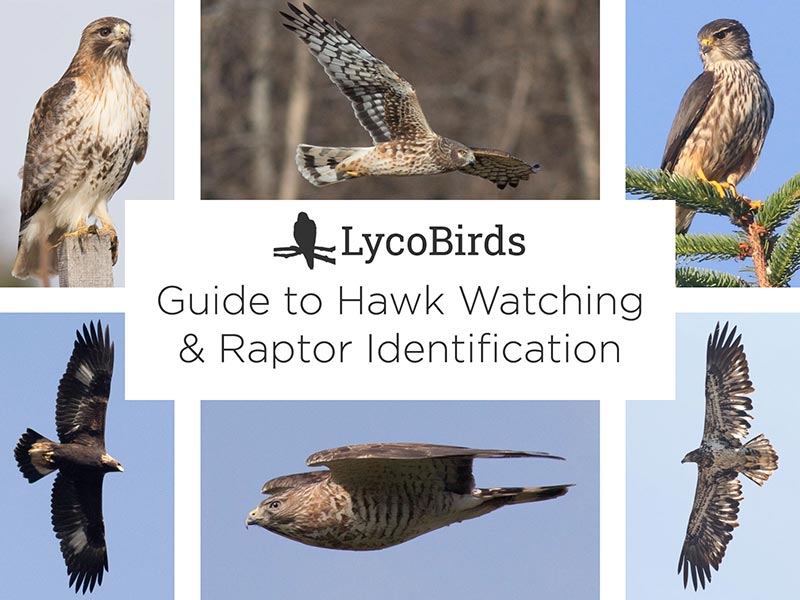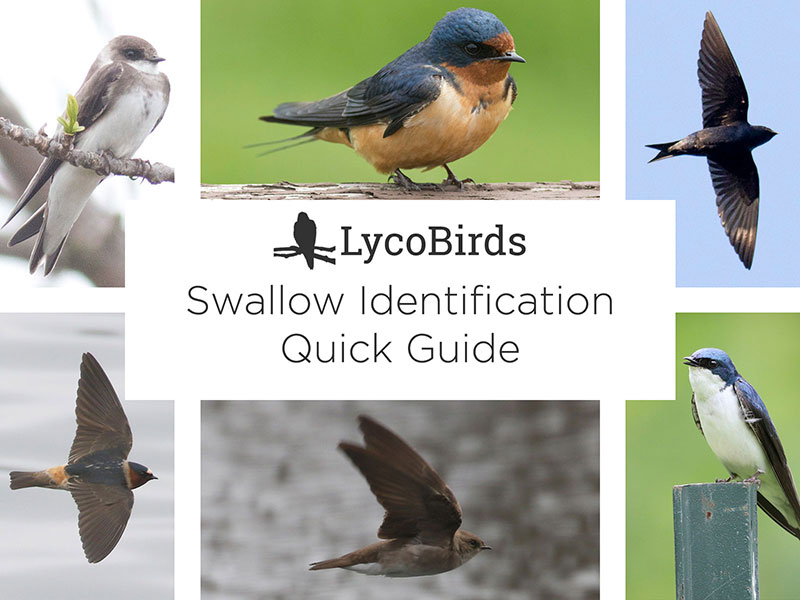Bird Abbreviations — 4-Letter Alpha Codes
Learning Bird Alpha Codes
You will often see experienced birders abbreviating bird names with 4 capital letters (e.g. RTHA, SOSP, etc.). These are called banding codes, or often, alpha codes. The exact history of these codes is beyond the scope of this article, which is mainly targeted at helping you learn the codes. If you are interested in more information about that, visit The Institute for Bird Populations website. They also cover the 6-letter variant that is rarely, if ever, used in a casual context and is not worth learning — just stick to the 4-letter ones unless you will be doing work that requires the 6-letter variants.
It's also worth noting that there are disagreements between the main list authorities on a few specific codes. What is provided here is the standard casual-use form. This resource is meant as an introduction, so if you are doing official work, you should confirm what standards you should be following.
You can easily find complete lists with all of the species, but it's really not necessary, so such a list is not included here. You shouldn't be memorizing them at all, other than a few exceptions covered below. Once you learn the basic rules, generating the codes should be easy.
So, why would you want to learn these codes? Birders often use them when messaging each other, or in social media posts and comments, since full names can be cumbersome to type, especially on smartphones. Another big advantage to knowing them is that they are search shortcuts in many bird apps, such as the iOS Sibley and eBird apps (eBird works even if you don't learn the exceptions).
Usage Etiquette
It's typically recommended to only use these alpha codes for subsequent references after the species has been named, or when you are communicating with a person or audience that you know understands the codes.
Abbreviation Rules
Other than some exceptions covered below, learning the basic rules should only take a few minutes.
Single-word Names
This case is easy! Use the first 4 letters of the name. If the name is shorter than four letters, which barely applies to any bird species in the world, the code is shortened accordingly.
General form:
Xxxxxxxxxx
Examples:
Sora — SORA
Whimbrel — WHIM
Practice:
(remember that codes should be all capital letters, but particularly on smartphones, lowercase or mixed case are often used for convenience, so these practice quizzes will accept any capitalization)
Two words
Simply take the first two letters from each word.
General form:
Xxxxxxx Xxxxxxxxxx
Examples:
Song Sparrow — SOSP
Belted Kingfisher — BEKI
Practice:
Three total words, with a hyphenated pair
There are two forms, depending on where the hyphen is placed. In either case, use the first letter from each of the hyphenated words, and the first two letters from the remaining word.
Hyphen in first part
This is one of the most common ways that birds are named. Use the first letter from each of the hyphenated words, and the first two letters from the last word.
General form:
Xxxxxx-xxxxxxxx Xxxxxxxxxx
Examples:
Broad-winged Hawk — BWHA
Yellow-billed Cuckcoo — YBCU
Practice:
Hyphen in second part
This is less common than the first form, but there are a few species that follow this form. Use the first two letters from the first word and then use the first letter from each of the hyphenated words.
General form:
Xxxxxxxxxx Xxxxxx-xxxxxxxx
Examples:
Eurasian Collared-Dove (EUCD)
Eastern Wood-Pewee (EAWP)
Practice:
Names with three separate words
Since most of these names have two adjectives and then end with the name of their family, these are treated just like the "hyphen in first word" case above, taking one letter from each of the first two words, and then two from the last word. Names with three words joined with a hyphen are treated identically.
General form:
Xxxxxx Xxxxxxxx Xxxxxxxxxx
Examples:
American Black Duck — ABDU
Great Blue Heron — GBHE
Chuck-will's-widow — CWWI
Practice:
Names with 4 parts
Some species have names with 4 distinct parts separated by a mix of spaces and hyphens. Use the first letter of each part.
General form:
Xxxxxx-xxxxxxxx Xxxxxxxxx-Xxxxxxxxx
Examples:
Yellow-crowned Night-Heron — YCNH
Lesser Black-backed Gull — LBBG
Black-and-white Warbler — BAWW
Practice:
Exceptions
These exceptions basically need to just be memorized. There are some basic rules for how they are generally derived, but it's just easier to memorize the codes themselves. Up until this point, the information has been applicable to just about any birder in North America, especially in the east. Now, I'm going to narrow it to just Pennsylvania for the expected exceptions. If you bird in another area of the country, it might be worth taking a look at the full list to see what exceptions might be present in your area. They are all marked on the list provided by The Institute for Bird Populations.
Luckily, there aren't too many exceptions to the basic rules in Pennsylvania. When in doubt, remember that it's always fine to write out the full name.
- Canada Goose and Cackling Goose conflict — CANG (Canada Goose), CACG (Cackling Goose)
- Trumpeter Swan and Tree Swallow conflict — TRUS (Trumpeter Swan), TRES (Tree Swallow)
- Northern Shoveler and Northern Shrike conflict — NSHO (Northern Shoveler), NSHR (Northern Shrike)
- Ring-necked Pheasant (RNEP) conflicts with Red-necked Phalarope, which retains its unmodified RNPH since Ring-necked Pheasant is a gamebird
- Herring Gull (HERG) conflicts with Heermann's Gull (HEEG), which would be very rare in PA
- Barn Owl and Barred Owl conflict — BANO (Barn Owl), BADO (Barred Owl)
- Bank Swallow and Barn Swallow conflict — BANS (Bank Swallow), BARS (Barn Swallow)
- Carolina Wren (CARW) has a three-way conflict with Canyon Wren (CANW) and Cactus Wren (CACW), which would both be very rare in PA
- Cedar Waxwing and Cerulean Warbler conflict — CEDW (Cedar Waxwing), CERW (Cerulean Warbler)
- Savannah Sparrow (SAVS) has a three-way conflict with Sagebrush Sparrow (SAGS) and Saltmarsh Sparrow (SALS), which would both be very rare in PA
- Prothonotary Warbler and Prairie Warbler conflict — PROW (Prothonotary Warbler), PRAW (Prairie Warbler)
- Connecticut Warbler (CONW) conflicts with Colima Warbler (COLW), a western species.
- Blackburnian Warbler and Blackpoll Warbler conflict — BLBW (Blackburnian Warbler), BLPW (Blackpoll Warbler)
- Black-throated Green Warbler (BTNW) conflicts with Black-throated Gray Warbler (BTYW), a western species.
- With the recent split/renaming of Northern Goshawk, there is now a conflict of American Goshawk and American Goldfinch — AGOS (American Goshawk), AGOL (American Goldfinch)
- If the first word contains a second capital letter, it is treated like a hyphenated word. That applies to LeConte's Sparrow — LCSP, LeConte's Thrasher — LCTH, MacGillivray's Warbler — MGWA, and
McCown's Longspur — MCLO(has been renamed as Thick-billed Longspur, so that no longer applies), all of which are rare in PA. - Roseate Tern (ROST) and Royal Tern (ROYT) conflict with each other, but given the rarity of either species in Pennsylvania, just write them out fully to avoid confusion.
There are other exceptions, of course, but the ones listed above should suffice for any Pennsylvania birder.
Other Abbreviations
These are not technically correct as banding codes, but you might come across these abbreviations, so they're worth being aware of.
- RWBB = Red-winged Blackbird; real code is RWBL (blackbird is one word)
- GHO = Great Horned Owl; real code is GHOW
- SEO = Short-eared Owl; real code is SEOW
- GBH = Great Blue Heron; real code is GBHE
- RTH = Red-tailed Hawk; real code is RTHA
- RBGB = Rose-breasted Grosbeak; real code is RBGR (grosbeak is one word)
- Hawk watchers sometimes shorten Turkey Vulture to TV
Additional Practice
Here is a mixed set of species, if you want additional practice.
Looking for more practice?
Try our Alpha Code Practice Tool, which randomly selects from over 350 species.
Like this? Want to help fund more tools and projects on our site?
Support LycoBirds

